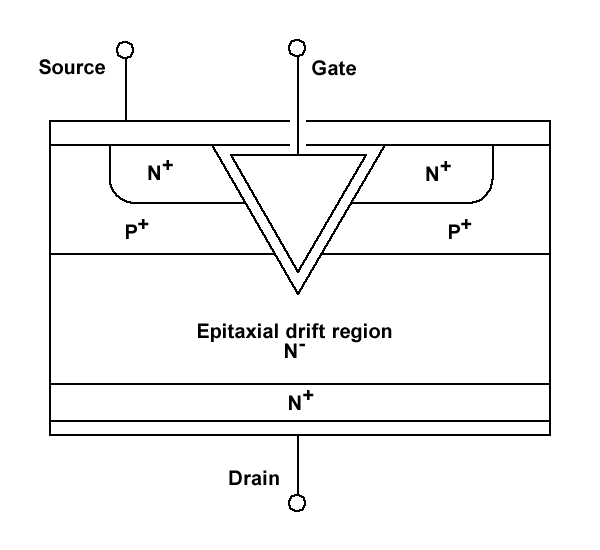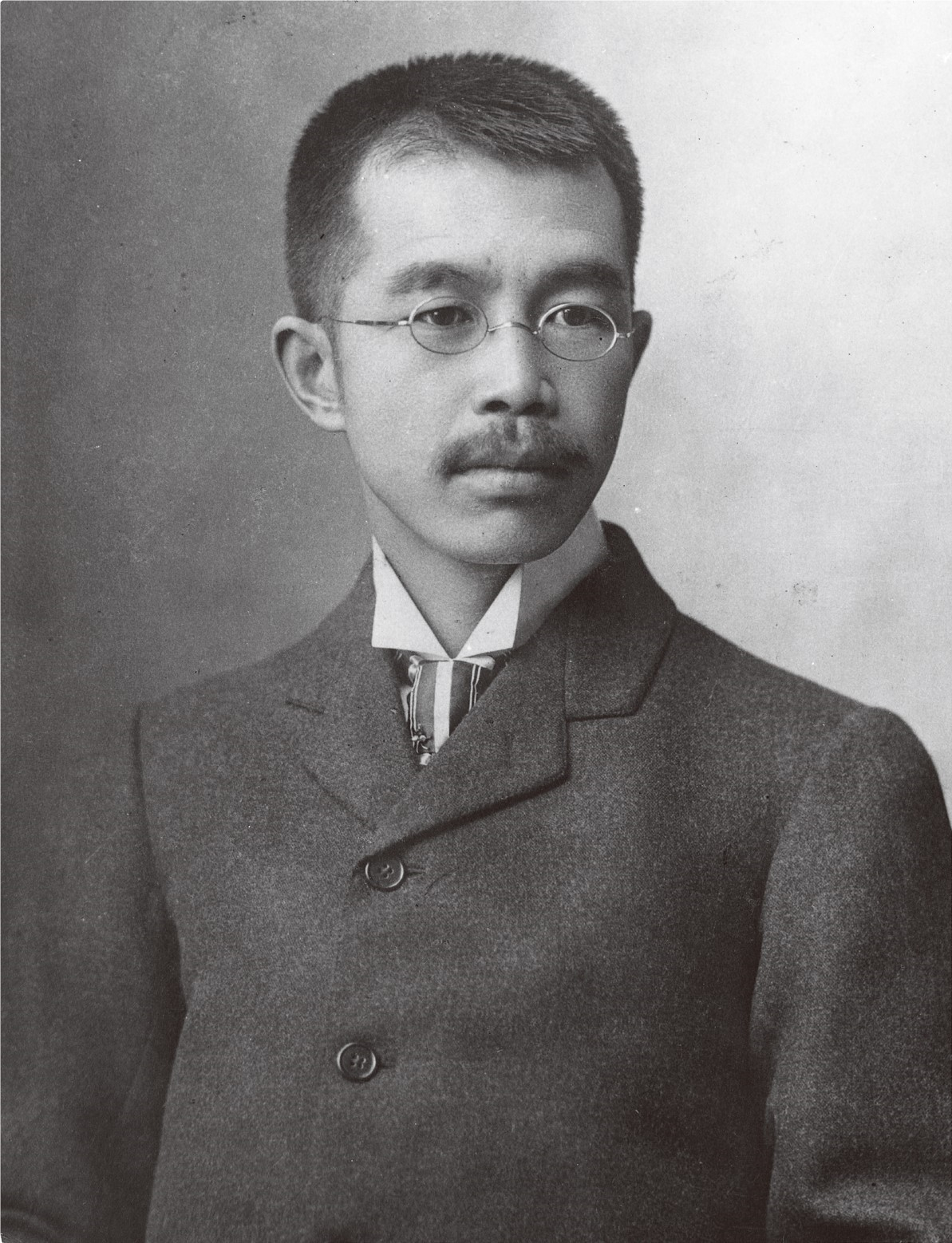|
VDMOS
A power MOSFET is a specific type of metal–oxide–semiconductor field-effect transistor (MOSFET) designed to handle significant power levels. Compared to the other power semiconductor devices, such as an insulated-gate bipolar transistor (IGBT) or a thyristor, its main advantages are high switching speed and good efficiency at low voltages. It shares with the IGBT an isolated gate that makes it easy to drive. They can be subject to low gain, sometimes to a degree that the gate voltage needs to be higher than the voltage under control. The design of power MOSFETs was made possible by the evolution of MOSFET and CMOS technology, used for manufacturing integrated circuits since the 1960s. The power MOSFET shares its operating principle with its low-power counterpart, the lateral MOSFET. The power MOSFET, which is commonly used in power electronics, was adapted from the standard MOSFET and commercially introduced in the 1970s. The power MOSFET is the most common power semicondu ... [...More Info...] [...Related Items...] OR: [Wikipedia] [Google] [Baidu] |
MOSFET
upright=1.3, Two power MOSFETs in amperes">A in the ''on'' state, dissipating up to about 100 watt">W and controlling a load of over 2000 W. A matchstick is pictured for scale. In electronics, the metal–oxide–semiconductor field-effect transistor (MOSFET, MOS-FET, MOS FET, or MOS transistor) is a type of field-effect transistor (FET), most commonly fabricated by the controlled oxidation of silicon. It has an insulated gate, the voltage of which determines the conductivity of the device. This ability to change conductivity with the amount of applied voltage can be used for amplifying or switching electronic signals. The term ''metal–insulator–semiconductor field-effect transistor'' (''MISFET'') is almost synonymous with ''MOSFET''. Another near-synonym is ''insulated-gate field-effect transistor'' (''IGFET''). The main advantage of a MOSFET is that it requires almost no input current to control the load current under steady-state or low-frequency conditions ... [...More Info...] [...Related Items...] OR: [Wikipedia] [Google] [Baidu] |
VMOS
A VMOS () (vertical metal oxide semiconductor or V-groove MOS) transistor is a type of metal–oxide–semiconductor field-effect transistor (MOSFET). VMOS is also used to describe the V-groove shape vertically cut into the substrate material. The "V" shape of the MOSFET's Gate oxide, gate allows the device to deliver a higher amount of Electric current, current from the Field effect transistor, source to the drain of the device. The shape of the depletion region creates a wider channel, allowing more current to flow through it. During operation in blocking mode, the highest electric field occurs at the N+/p+ junction. The presence of a sharp corner at the bottom of the groove enhances the electric field at the edge of the channel in the depletion region, thus reducing the breakdown voltage of the device. This electric field launches electrons into the gate oxide and consequently, the trapped electrons shift the threshold voltage of the MOSFET. For this reason, the V-groove arc ... [...More Info...] [...Related Items...] OR: [Wikipedia] [Google] [Baidu] |
Surface-mount Technology
Surface-mount technology (SMT), originally called planar mounting, is a method in which the electrical components are mounted directly onto the surface of a printed circuit board (PCB). An electrical component mounted in this manner is referred to as a surface-mount device (SMD). In industry, this approach has largely replaced through-hole technology construction method of fitting components, in large part because SMT allows for increased manufacturing automation which reduces cost and improves quality. It also allows for more components to fit on a given area of substrate. Both technologies can be used on the same board, with the through-hole technology often used for components not suitable for surface mounting such as large transformers and heat-sinked power semiconductors. An SMT component is usually smaller than its through-hole counterpart because it has either smaller leads or no leads at all. It may have short pins or leads of various styles, flat contacts, a matrix of ... [...More Info...] [...Related Items...] OR: [Wikipedia] [Google] [Baidu] |
DC-to-DC Converter
A DC-to-DC converter is an electronic circuit or electromechanical device that converts a source of direct current (DC) from one voltage level to another. It is a type of Electric power conversion, electric power converter. Power levels range from very low (small batteries) to very high (high-voltage power transmission). History Before the development of power semiconductors, one way to convert the voltage of a DC supply to a higher voltage, for low-power applications, was to convert it to AC by using a vibrator (electronic), vibrator, then by a step-up transformer, and finally a rectifier. Where higher power was needed, a motor–generator unit was often used, in which an electric motor drove a generator that produced the desired voltage. (The motor and generator could be separate devices, or they could be combined into a single "dynamotor" unit with no external power shaft.) These relatively inefficient and expensive designs were used only when there was no alternative, as to po ... [...More Info...] [...Related Items...] OR: [Wikipedia] [Google] [Baidu] |
Yamaha Corporation
is a Japanese multinational musical instrument and audio equipment manufacturer. It is one of the constituents of Nikkei 225 and is the world's largest musical instrument manufacturing company. The former motorcycle division was established in 1955 as Yamaha Motor Co., Ltd., which started as an affiliated company but has been spun-off as its own independent company. History was established in 1887 as a reed organ manufacturer by Torakusu Yamaha () in Hamamatsu, Shizuoka Prefecture, and was incorporated on 12 October 1897. In 1900, the company manufactured the first piano to be made in Japan, and its first grand piano two years later. In 1987, 100 years after the first reed organ built by Yamaha, the company was renamed Yamaha Corporation in honor of its founder. The company's origins as a musical instrument manufacturer are still reflected today in the group's logo—a trio of interlocking tuning forks. After World War II, company president Genichi Kawakami repur ... [...More Info...] [...Related Items...] OR: [Wikipedia] [Google] [Baidu] |
Tohoku University
is a public research university in Sendai, Miyagi, Japan. It is colloquially referred to as or . Established in 1907 as the third of the Imperial Universities, after the University of Tokyo and Kyoto University, it initially focused on science and medicine, later expanding to include humanities studies as well. In 2016, Tohoku University had 10 faculties, 16 graduate schools and 6 research institutes, with a total enrollment of 17,885 students. The university's three core values are "Research First (研究第一主義)," "Open-Doors (門戸開放)," and "Practice-Oriented Research and Education (実学尊重)." History On 22 June 1907 (Mēji 40), Tohoku Imperial University (東北帝國大學, Tōhoku teikoku daigaku) was established by the Meiji government as the third Imperial University of Japan, after Tokyo Imperial University (1877) and Kyoto Imperial University (1897). From its inception, it advocated 'Open-door' policies, becoming the first university in Japan ... [...More Info...] [...Related Items...] OR: [Wikipedia] [Google] [Baidu] |
Jun-ichi Nishizawa
was a Japanese engineer and inventor. He is known for his electronic inventions since the 1950s, including the PIN diode, static induction transistor, static induction thyristor, SIT/SITh. His inventions contributed to the development of internet technology and the Information Age. He was a professor at Sophia University. Biography Nishizawa was born in Sendai, Japan, on September 12, 1926. He earned a B.S. in 1948, and a Doctor of Engineering degree in 1960, from Tohoku University. In 1953, he joined the Research Institute of Electrical Communication at Tohoku University. He became a professor there and was appointed director to two research institutes. From 1990 to 1996, Nishizawa served as the President of Tohoku University. He became the president of Iwate Prefectural University in 1998. Research In 1950, the static induction transistor was invented by Jun-ichi Nishizawa and Y. Watanabe. The PIN photodiode was also invented by Nishizawa and his colleagues in 1950 ... [...More Info...] [...Related Items...] OR: [Wikipedia] [Google] [Baidu] |
National Institute Of Advanced Industrial Science And Technology
The , or AIST, is a Japanese research facility headquartered in Tokyo, and most of the workforce is located in Tsukuba Science City, Ibaraki, and in several cities throughout Japan. The institute is managed to integrate scientific and engineering knowledge to address socio-economic needs. It became a newly designed legal body of Independent Administrative Institution in 2001, remaining under the Ministry of Economy, Trade and Industry. History In its present form AIST was established in 2001. However, its predecessor institutes have been operating since 1882. In 2015, it is running more than 40 researching institutes and several branches over Japan including International Metrology Cooperation Office. Three missions of AIST * Advanced Research by exploring broad spectra of research fields and integrating multidisciplinary subjects to promote innovation in versatile fields that strengthen the competitiveness of Japanese industries in the world market and create new industr ... [...More Info...] [...Related Items...] OR: [Wikipedia] [Google] [Baidu] |
Self-aligned Gate
In semiconductor electronics fabrication technology, a self-aligned gate is a transistor manufacturing approach whereby the gate electrode of a MOSFET (metal–oxide–semiconductor field-effect transistor) is used as a mask for the doping of the source and drain regions. This technique ensures that the gate is naturally and precisely aligned to the edges of the source and drain. The use of self-aligned gates in MOS transistors is one of the key innovations that led to the large increase in computing power in the 1970s. Self-aligned gates are still used in most modern integrated circuit processes. Introduction IC construction Integrated circuits (ICs, or "chips") are produced in a multi-step process that builds up multiple layers on the surface of a disk of silicon known as a " wafer". Each layer is patterned by coating the wafer in photoresist and then exposing it to ultraviolet light being shone through a stencil-like "mask". Depending on the process, the photoresist that ... [...More Info...] [...Related Items...] OR: [Wikipedia] [Google] [Baidu] |
Informa
Informa plc is a British publishing, business intelligence, and exhibitions group based in London, England. It is listed on the London Stock Exchange and is a constituent of the FTSE 100 Index. It has offices in 30 countries and around 12,000 employees. Informa owns numerous brands including Fan Expo, VidCon, Cannes Lions International Festival of Creativity, CRC Press, Routledge, and Taylor & Francis. History Informa itself was created in 1998 by the merger of IBC Group plc (formerly International Business Communications) and LLP Group plc (publisher of '' Lloyd's List''). Since then Informa has expanded considerably, including a 2003 purchase of '' PJB'' publisher PJB, 2004 merger with the publishing company Taylor & Francis and a 2005 acquisition of IIR Holdings, a human capital development company, for £768 million. In October 2006, the company was approached by Springer Science and Business Media in a takeover bid, but in early November the Informa board rejecte ... [...More Info...] [...Related Items...] OR: [Wikipedia] [Google] [Baidu] |
Hitachi
() is a Japanese Multinational corporation, multinational Conglomerate (company), conglomerate founded in 1910 and headquartered in Chiyoda, Tokyo. The company is active in various industries, including digital systems, power and renewable energy, railway systems, Health care, healthcare products, and Financial system, financial systems. The company was founded as an electrical machinery manufacturing subsidiary of the Kuhara Mining Plant in Hitachi, Ibaraki by engineer Namihei Odaira in 1910. It began operating as an independent company under its current name in 1920. Hitachi is listed on the Tokyo Stock Exchange and is a key component of the Nikkei 225 and TOPIX Core30 indices. As of June 2024, it has a market capitalisation of 16.9 trillion yen, making it the fourth largest Japanese company by market value. In terms of global recognition, Hitachi was ranked 38th in the 2012 Fortune Global 500 and 129th in the 2012 Forbes Global 2000. Hitachi is a highly globalised conglomerat ... [...More Info...] [...Related Items...] OR: [Wikipedia] [Google] [Baidu] |




